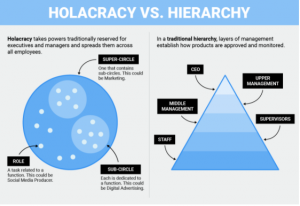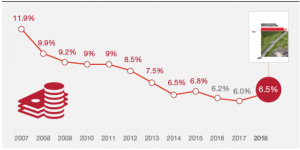Last week we talked about establishing your Compensation Strategy and how to determine the competition and your rationale for certain recommendations. Once you have a thorough well thought out strategy, though, you need to execute. Careful, well thought out execution is every bit as important as developing your strategy. Remember, it is likely that you understand compensation better than anyone else in your organization so start at the top.
Get your Executive Team Bought in
Keep in mind that executive teams have a lot on their mind and are likely not up to speed with why a compensation strategy is important, so start simple. https://www.shrm.org/ResourcesAndTools/hr-topics/compensation/Pages/AlignPay.aspx The payroll in a company is by far the largest expenditure and compensation touches all areas like candidate attraction, retention, turnover and satisfaction to some degree. Pay ranks in the number three spot as to reasons why employees leave positions and the cost to replace that employee is anywhere between 100-200% of their base salary. https://www.appleone.com/Employers/SCALE/2017/EngagementTools/cost-of-turnover-calculator.aspx Plenty of reason to make sure that compensation is NOT the driving force behind your resignations.
Train your Managers to have Compensation Conversations
Once your executive team is bought into your strategy, it’s time to train your managers to talk about compensation. https://hbr.org/2014/04/how-to-discuss-pay-with-your-employees We have all heard or experienced firsthand the horror stories of employees finding out what their raise is when their paycheck comes out, never having had a conversation with their manager, or the manager walking into a group of employees, handing each a piece of paper with their raise on it and walking out, thus missing a critical opportunity to further enhance the employee’s satisfaction and level of engagement. https://compensation.blr.com/Compensation-news/Compensation/Compensation-Administration/Preparing-for-Compensation-Conversations-with-Empl/ The first step is to listen. Listen to what the employee has to say, repeat back what you think you have heard. Share critical information, such as the merit budget pool for the year and the compensation philosophy.
Communicate the Process
Letting the team know up front and reminding them often of who will do what we go a long ways towards preparing for success. http://www.simplehrguide.com/compensation-strategy-key-content.html Communicate the roles that HR will play-to establish salary grades and structures, to provide compa-ratios, to set the merit pool amount and to weigh in on any recommended market adjustments. The first line managers will be responsible for recommending salary increase, justifying recommendations for promotions or market adjustments and communicating the approved increases to the individual employees. Your executive team has the responsibility to communicate and support the compensation strategy and philosophy they have approved. Employees, too, play a role. They have the responsibility to ask questions and ensure that they get a satisfactory answer. Make sure that they know their manager is their first stop, but if questions remain unanswered that HR’s door is always open.
Do you best to create an environment where compensation is not practiced in a black box, but is implemented in a thoughtful, straight forward way, where everyone understands what it is meant to achieve and feels comfortable offering suggestions to enhance the process. A compensation strategy, created and implemented well, can enhance many aspects of the organization and the employee experience.










